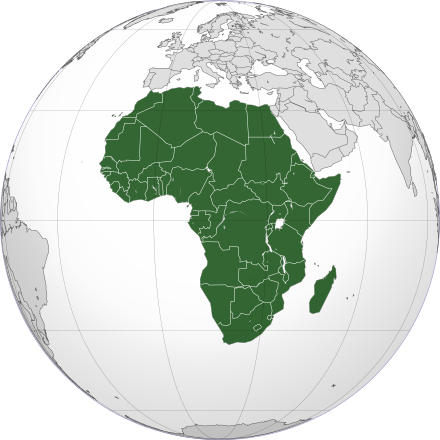Oil and gas industry groups asked the U.S. Supreme Court to strike down state subsidies for economically struggling nuclear power plants. Dailycaller.com
Blog
-

Geiger Readings for Feb 11, 2019
Ambient office = 106 nanosieverts per hour
Ambient outside = 108 nanosieverts per hour
Soil exposed to rain water = 108 nanosieverts per hour
Potato from Central Market = 80 nanosieverts per hour
Tap water = 104 nanosieverts per hour
Filter water = 84 nanosieverts per hour
-

Geiger Readings for Feb 10, 2019
Ambient office = 139 nanosieverts per hour
Ambient outside = 105 nanosieverts per hour
Soil exposed to rain water = 106 nanosieverts per hour
Garlic bulb from Central Market = 100 nanosieverts per hour
Tap water = 91 nanosieverts per hour
Filter water = 83 nanosieverts per hour
-

Geiger Readings for Feb 09, 2019
Ambient office = 119 nanosieverts per hour
Ambient outside = 90 nanosieverts per hour
Soil exposed to rain water = 97 nanosieverts per hour
Anaheim pepper from Central Market = 66 nanosieverts per hour
Tap water = 76 nanosieverts per hour
Filter water = 60 nanosieverts per hour
Dover sole – Caught in USA = 108 nanosieverts per hour
-

Radioactive Waste 378 – Germany Has To Deal With Nuclear Waste Stored In The Old Asse Potash Mine
Following the Fukushima nuclear disaster in March of 2011, Germany made a commitment to shut down all of its nuclear power reactors. Eight of the seventeen nuclear power reactors in Germany have now been shut down and the rest are scheduled to be shut down by 2022. While Germany will no longer be generating electricity from nuclear power after 2022, it will take decades to deal with the legacy of nuclear power in the form of spent nuclear fuel and other radioactive wastes.
For decades, a variety of nuclear wastes have been stored in the old Asse potash mine over fifteen thousand feet beneath the northern Germany state of Lower Saxony. Low to medium level nuclear waste was carelessly dumped in the old mine in the 1960s and 1970s. Following that, the storage was more organized. Most of the waste is from nuclear reactors but there are also some radioactive wastes from hospitals and research facilities. Questions have been raised but not definitively answered about whether there may be high level nuclear waste in the mine. Currently, there are one hundred and twenty-six thousand barrels of radioactive waste stored in the Asse mine.
Potash mining at Asse was shut down in 1965. Until the end of the 1970s, radioactive materials were placed in the mine ostensibly for “research purposes” but the mine was a really repository. The mine has been deteriorating for a long time. About thirty-five hundred gallons of water flow into the tunnels of the mine every day.
In 2010, a decision was made to remove the barrels of waste from the mine. There is a danger that the mine could collapse and allow the radioactive wastes to come into contact with the groundwater in the area. The old shafts and layout of the Asse mine do not meet the current legal standards for storing nuclear materials.
It was estimated that it would cost at least a billion dollars to clean out the mine. However, many experts have expressed doubts that it will be possible to recover all the barrels from the old mine shafts. Germany founded a federal company called Bundesgesellschaft Für Endlagerung (BGE) for radioactive waste disposal in 2016.
Thomas Lautsch is one of the experts at BGE. He told the visiting German Environment Minister Svenja Schulze on a recent tour of the mine, “We would have to build a retrieval mine, which is more than simply just a new shaft. We would also need an interim storage facility for the waste, and we would have to create many new shafts to gain access to the individual chambers. By about 2024, we have to start construction.” He added that he expected the construction phase of the project to take eight or nine years.
In essence, an entirely new mine will have to be developed around the old mine in order to just retrieve the barrels of waste. If everything goes according to plan, removal of the barrels could begin in 2033. Schulze admits that this timeline for removal of the barrels is much longer than desirable. But, she said that safety must be considered as well as speed. It will be revealed over the next few years whether or not a safe and speedy extraction of the barrels of waste at the Asse mine is even possible. -

Geiger Readings for Feb 08, 2019
Ambient office = 84 nanosieverts per hour
Ambient outside = 114 nanosieverts per hour
Soil exposed to rain water = 114 nanosieverts per hour
Crimini mushroom from Central Market = 72 nanosieverts per hour
Tap water = 94 nanosieverts per hour
Filter water = 90 nanosieverts per hour
-

Nuclear Reactors 655 – Russia And China Working On Exporting Nuclear Technology To African Nations
I have briefly mentioned Africa on this blog in the past. There are fifty-two countries in Africa but only one of them, South Africa, has a nuclear reactor. Countries that manufacture nuclear reactors and produce nuclear fuel, especially Russia and China, see Africa as a great future market for nuclear power to provide desperately needed electrification to the developing countries there. Seven sub-Saharan African nations have signed memoranda of understanding (MoU) to develop their own nuclear power plants with help from Russia.
Two years ago, Ethiopia signed a MoU with Russia for the construction of a nuclear power plant and a nuclear research reactor. Ethiopia has been aggressively working on bringing electricity to its citizens to meet the rising demand. It also hopes to become one of the biggest exporters of power on the whole continent.
Under a five-year development plan that started in 2015, Ethiopia is working to add seventeen thousand megawatts to the current national capacity of four thousand megawatts from hydro, wind and geothermal sources. The most ambitious part of the plan is a project to build the Grand Renaissance Dam (GRD) on the Nile River. This dam will provide six thousand megawatts at full capacity when it is completed by 2023. However, there are concerns that as droughts become more common, the GRD will not always have sufficient water to operate at full capacity. Plans for an Ethiopian nuclear power plant are in the “pre-feasibility stage” but government officials say that they are serious about move forward with nuclear projects.
There are forty-eight countries in Africa that are considered “sub-Saharan.” Collectively they have eighteen times the population of Spain while generating the same amount of electricity as Spain. Nearly six in ten of the Africans in sub-Saharan nations do not have access to electricity. There is a strong push across Africa to solve the power problem with massive investment in nuclear power.
The other African countries that signed MoUs with Russia’s ROSATOM include Sudan, Kenya, Uganda, Nigeria, Rwanda, Zambia and Ghana. The content of the MoUs varies from talk of reactor construction to helping with nuclear feasibility studies and training of nuclear plant staff.
ROSATOM says that its plans for managing spent nuclear fuel and other radioactive waste vary from country to country with details to be worked out on a country by country basis further along in later stages of nuclear construction projects. They claim that such waste handling procedures will be “in strict compliance with international law.”
China has also been active in peddling nuclear power solutions to African nations. They have deals under development with Kenya, Sudan and Uganda.
The strong interest in nuclear power in sub-Saharan Africa stems from the lack of fossil fuels for internal use. There is not much coal in Africa and the natural gas from the fields in Nigeria and Tanzania is exported for profit. Population increase and pressure to reduce greenhouse emissions also play a part in encouraging the development of nuclear power.
One big concern that some critics have with major nuclear power projects in some African nations has to do with the presence of weak governments and rebel groups. Spent nuclear fuel could be used to build dirty bombs or reprocessed into plutonium to build nuclear weapons. Forty African nations have joined the Treaty of Pelindaba to create a nuclear-weapon-free zone in Africa. Another concern is whether or not Russia will really meet its commitment to remove spent nuclear fuel from its African clients.
Even the proponents of African nuclear power admit that it will not be easy to quickly build the infrastructure necessary to generate and distribute significant nuclear power in Africa given the resources available for such projects.
